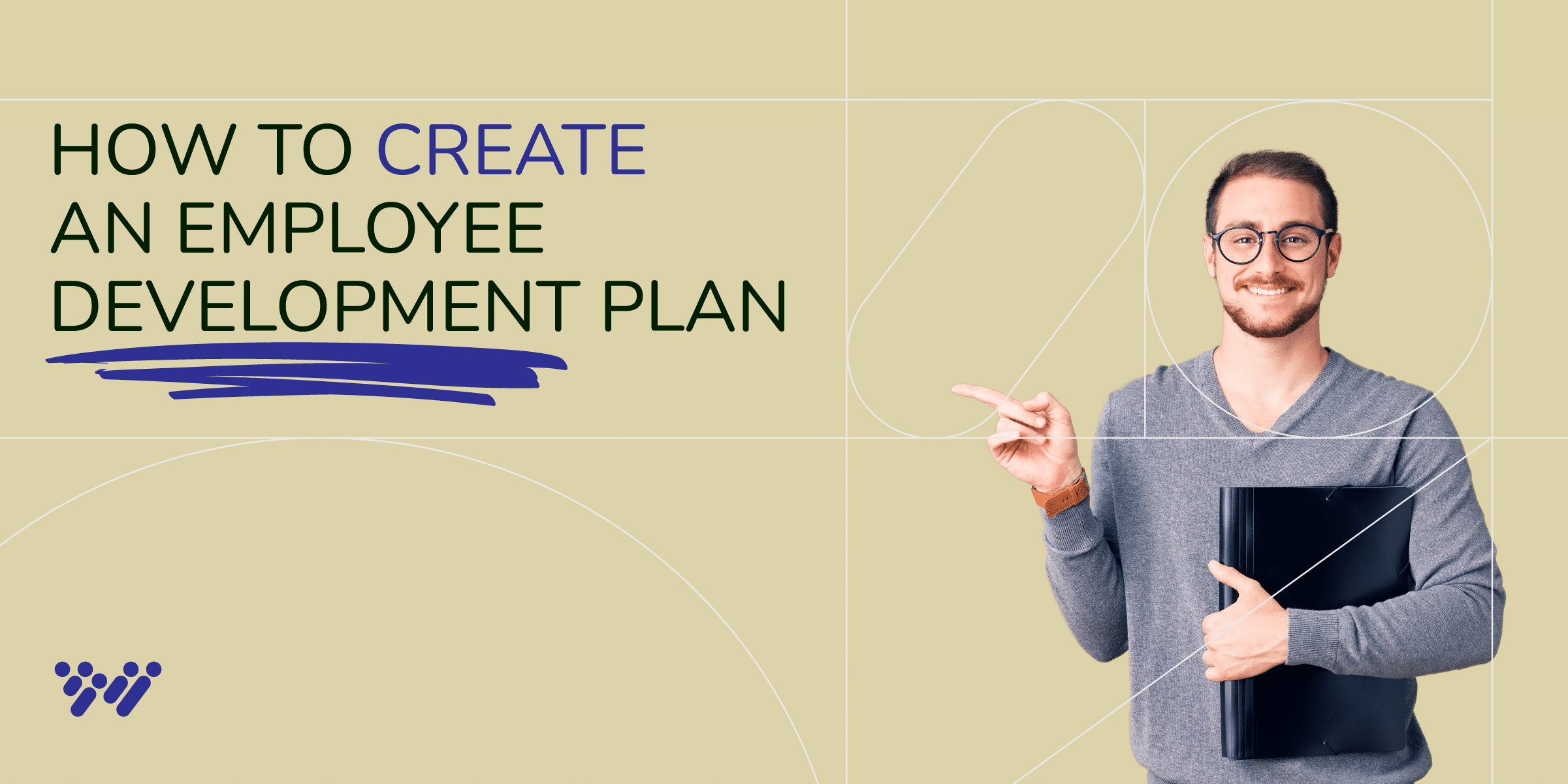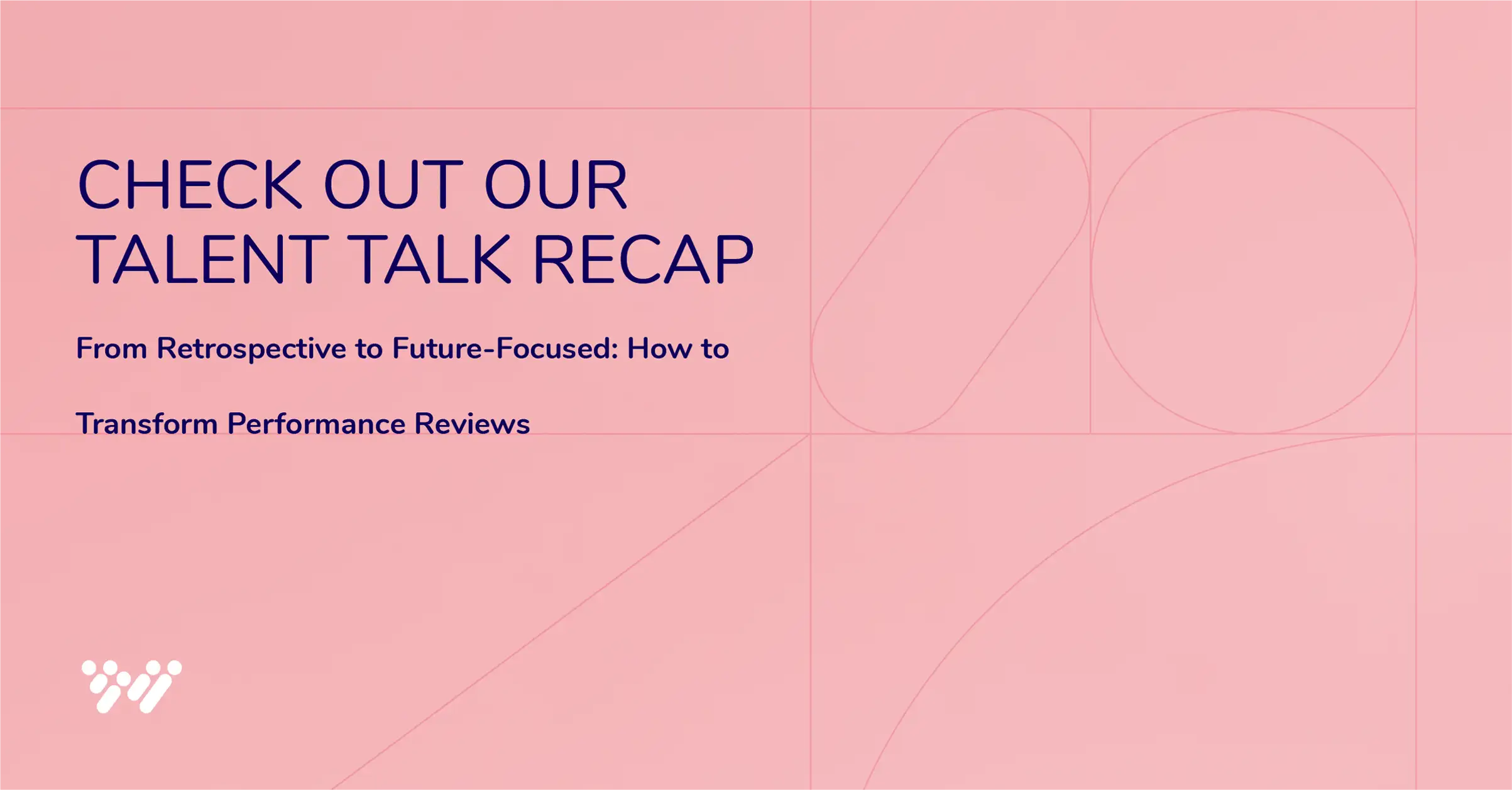“Acquiring the right talent is the most important key to growth. Hiring was — and still is — the most important thing we do.”
Marc Benioff, Salesforce CEO
Marc Benioff, the visionary behind Salesforce. He championed the power of hiring and retaining the cream of the crop when it comes to talent. But the question remains: How do you begin to hire and retain exceptional performers?
It all starts with talent development, the fundamental approach for attracting and building more A-players and substantially impacting your organization’s bottom line.
What Is Talent Development?
In the world of learning and development (L&D), there are a lot of buzzwords and concepts. For example, what is talent management, exactly, and how is it different than talent development? Let’s make a few distinctions, starting with the definition of talent development: “Talent development is the deliberate process of identifying, nurturing, and maximizing the skills and capabilities of high-potential individuals.”
How does talent development differ from other practices within HR?
- Talent development vs. talent management: Talent management simply covers HR activities related to managing existing employees, not candidates. It includes practices like performance management, succession planning, talent development, and workforce analytics. Talent development falls under the umbrella of talent management and refers to ways organizations invest in the continuous growth and development of their employees. Talent development and talent management both apply to all employees, not just a select few.
- Talent development vs. performance management: Performance management focuses on evaluating and rewarding past work performance. This involves performance reviews, bonuses, and behind-the-scenes work where HR evaluates performance based on established benchmarks. But without an emphasis on continuous learning and a roadmap for employees to improve, managers are likely to see little improvement year over year. Talent development works in tandem with performance management, but unlike performance management, talent development takes a forward-looking approach to employee performance. It starts by outlining performance goals aligned with the organization’s needs and creating personalized development plans to achieve those goals.
- Talent development vs. employee development: Talent development and employee development are synonymous. However, there can be distinctions between the type of program and who has access. Traditionally, employee or talent development is reserved for leadership — for financial and scalability reasons. The best talent development programs democratize access for all employees. It empowers each individual to enhance their performance, contributing to the organization’s success while advancing their careers — resulting in increased performance at scale.
Rest assured, this article goes way beyond definitions; it’s your guide to effectively implementing a talent development strategy within your business.
Benefits of a Talent Development Program
A strategic talent development program is your ticket to short- and long-term organizational success. According to the WEF’s Future of Jobs Report 2023, 44% of workers risk having their core skills disrupted due to rapid technological advancements, underscoring the importance of soft skills (hereafter referred to as power skills or competencies) like leadership, social influence, curiosity, and lifelong learning.

Given the pace of change, businesses cannot afford to sit on the sidelines of their employees’ development. Attracting and retaining top-tier talent is essential as high achievers actively seek growth opportunities. And because talent development programs are scalable, they can go beyond the typical focus on high performers. They can help improve the role-critical power skills of all employees, helping organizations build a pipeline of promotable talent. This approach is vital in today’s competitive landscape, as it ensures all employees, regardless of their current roles, have the opportunity to advance, contribute to the organization, and remain relevant to the company’s long-term success.
Below are the four leading benefits of a talent development program
- Attract the Best Candidates
- Increase Productivity
- Reduce Skill Gaps
- Increase Employee Engagement & Customer Satisfaction
Attract the Best Candidates
Pursuing high performers is a worthwhile investment even in a tight economy today with a “do more with less” mindset. Why? McKinsey says high performers in highly complex roles are a whopping 800 percent more productive than their peers.
While top-tier talent is in high demand, offering a rewarding career with a focus on talent development is a major draw for ambitious individuals.
To attract great candidates, it’s essential to showcase your commitment to talent development from the start. This commitment should be evident in your job descriptions, career site, and throughout the recruitment process. This leads to higher engagement and enthusiasm among candidates throughout the hiring process, as candidates know they’ll be invested in them throughout their time at your company.
One practical way to demonstrate this commitment is by using psychometric and behavioral assessments to evaluate candidate compatibility right from the beginning. Not only are these talent selection assessments great for finding the best-fit talent, but they also form a blueprint for ongoing development, showcasing your dedication to developing talent.
Increase Productivity
Well-executed talent development programs increase productivity, enhance employee skills, foster engagement, and curb turnover. But don’t just take our word for it; here’s what prominent research has to say.
Research from Deloitte indicates a 37% boost in productivity for companies prioritizing learning. This extends beyond skills acquisition to improved engagement and a vibrant workplace culture.
Moreover, McKinsey’s research highlights that companies equally committed to talent development and high-performance standards excel in attracting and retaining top-tier candidates. They exhibit greater earnings resilience and maintain lower attrition rates, which is especially crucial in today’s competitive landscape.
Companies that build human capital are more consistent and resilient performers and are better at attracting and retaining talent. — “Performance through people: Transforming human capital into competitive advantage,” -McKinsey
On the flip side, neglecting talent development can carry a hefty price tag. According to PwC’s 2023 global CEO survey, 52% of CEOs believe labor and skills shortages will significantly impact profitability in their industry over the next 10 years. Investing in employees today is a prerequisite for success tomorrow.
Reduce Skill Gaps
We are now in the “great upskilling” era, with 82% of companies planning to invest in on-the-job learning and training. This L&D trend is fueled by the anticipation that automation and technological advancements will redefine around 85 million jobs while creating 97 million new ones by 2025.
This evolving landscape presents a unique challenge: Organizations must prioritize identifying and developing talent for roles that haven’t even been defined yet. An employee’s current performance is just one part of the puzzle when assessing their suitability for future positions.
To address this challenge, companies need to expand their perspective beyond identifying only “top performers.” Exceptional talent can emerge from various parts of the organization, sometimes even from hidden places.
Given the diminishing importance of hard skills, the key is prioritizing learning agility and adaptability — traits that signal the ability to continuously pick up new skills. Hiring and developing individuals based on their ability to grow and adapt is crucial in the ever-changing economy and marketplace. Talent assessments, similar to how they help identify best-fit talent, can evaluate competencies like adaptability, problem-solving, and abstract thinking, all strong predictors of ongoing success.
Increase Employee Engagement & Customer Satisfaction
Consider what it would be like if every team member had an in-depth understanding of your company’s products or services, efficiently handling inquiries and issues. Then imagine if every employee understood the role-specific attributes that would impact their performance — and had a practical plan for improving those attributes. That’s the real magic of talent development. When it comes to customer success, building essential customer support skills, such as conflict resolution and interpersonal communication, helps team members become more proficient in assisting customers and resolving issues.
Talent development also improves employee engagement and the overall employee experience. Research highlights the benefits of high employee engagement, including enhanced customer engagement, increased productivity, better retention rates, and a remarkable 21% boost in profitability.
Harvard Business Review also explored the connection between positive employee experiences and customer satisfaction at a global retail brand. Stores with the highest employee engagement scores experienced revenue increases of over 50%, leading to proportional profit gains. Employees become more dedicated, productive, and motivated when you invest in their growth within your organization — and your customers directly benefit.
5 Talent Development Strategies for Your Business
If you’re eager to uncover the secrets of how to develop talent in a way that aligns with your organization’s goals, you’re in the right place. Keep reading for a step-by-step process.
- Identify talent goals
- Use the right tools to hire talent
- Design your talent development program
- Provide on-the-job learning opportunities
- Empower employees to make decisions

Step 1: Identify Talent Goals
Before offering learning opportunities to your employees, start by evaluating your organization’s specific talent goals. These come from a deep understanding of your company’s overarching vision and mission — and the skills and role-critical competencies needed to get there. This ensures that your talent development efforts are purposeful and well-aligned with your business’s talent-related objectives.
Your talent goals might revolve around enhancing leadership capabilities, fostering a culture of continuous learning, or strengthening succession planning. If your focus is on nurturing leadership potential, develop a talent development plan that identifies high-potential employees and provides access to comprehensive leadership development programs. This aligns individual career paths with your long-term company goals. Also, make sure to establish key performance indicators (KPIs) to monitor progress and measure the impact of your talent development initiatives on achieving your talent-related targets.
Step 2: Use the Right Tools to Hire Talent
The next step in your talent development strategy is attracting top-tier talent who are both qualified and compatible with your organization. Poor hires can be costly, with the U.S. Department of Labor estimating they can amount to 30% of an employee’s first-year earnings.
And when it comes to recruiting, research shows that relying solely on resumes is no more effective than a coin toss, resulting in a mere 50% success rate.
To overcome this challenge, it’s important to use the right tools to attract talent primed for development within your company. Consider leveraging psychometric, behavioral, and motivational assessments, like Wonderlic, which provide valuable insights into a candidate’s personality traits, work preferences, and alignment with your organization’s values and team dynamics. Compared to traditional resume-based assessments, Wonderlic Select’s assessment data has demonstrated a six-fold increase in effectiveness in predicting employee performance.
Recruiters can further enhance their talent acquisition strategies by using artificial intelligence (AI) to streamline job-matching and efficiently identify suitable candidates. Implementing a structured interview process with tailored behavioral and situational questions can also provide a standardized and objective means of evaluating candidates.
Step 3: Design Your Talent Development Program
Now that your organizational objectives are defined and a pool of top-tier talent secured, it’s time to design your talent development program. Remember, there’s no one-size-fits-all approach; what works for one company might not work for another. The key is to ensure your program effectively addresses your organizational needs, enhances employee skills, and contributes to overall business success.
To start designing a talent development program, ask yourself these questions:
- What are our short- and long-term development goals?
- How does our development program align with our talent objectives?
- Are there any compliance or regulatory requirements for our program?
- What’s our talent development budget?
- What are our employees’ preferred learning styles?
- Which specific skills and power skills are essential for our employees?
- Should we collaborate with external vendors or use internal resources for learning content?
- How will we keep talent development content up-to-date and relevant?
- How will we measure talent development effectiveness?
- How can we gather employee feedback?
- How much time should employees allocate for learning and development?
Once you’ve laid this foundation, it’s time to identify the right tools and services. Consider scalable talent assessments, which offer personalized talent development plans for every employee. These cost-effective solutions integrate with employees’ day-to-day work, helping employees learn while doing. If your company already offers many learning opportunities, find ways to align them with individual and organizational objectives.
Wonderlic Develop builds customized training plans for your employees at scale based on their role-critical attributes.
Step 4: Provide On-The-Job Learning Opportunities
On-the-job learning is a powerful strategy that allows employees to apply newly acquired knowledge and skills in their daily work, reinforcing their understanding as they tackle challenges and advance in the organization.
Assessments are key for on-the-job talent development, ensuring that each learning opportunity aligns with goals, adding structure to the process. Research shows hands-on learning solidifies learning in memory, with 75% of employees preferring learning on the job in small, manageable moments. This preference for — and the effectiveness of — experiential learning is why talent development professionals often rely on the 70-20-10 model. According to this model, individuals acquire knowledge in the following proportions: 70% from job-related experiences, 20% from interactions with others, and 10% from formal educational events.
Mentoring and coaching are impactful forms of on-the-job learning, providing guidance and support. Wonderlic Develop streamlines this process, creating deeper connections between coaching goals and performance, reducing administrative burdens, and facilitating smoother mentoring. Embracing on-the-job learning empowers employees with practical skills and fosters continuous growth in line with company objectives.
Step 5: Empower Employees to Make Decisions
Leadership expert and author Bruna Martinuzzi said, “Hire people who are smarter than you are — whose talents surpass yours — and give them opportunities for growth. It’s the smart thing to do and it is a sign of high personal humility.”
What is talent development if not a process of equipping employees with skills and confidence? Investing in developing your employees’ self-management skills, such as problem-solving and stress management, fosters trust, allowing them to lead projects independently. The key is providing an avenue for self-paced learning. By giving employees insights into their strengths and areas for improvement, you empower them to determine where and how they should focus their development efforts.
To empower employees in talent development, you should:
- Encourage open communication
- Let employees set development goals
- Provide insights into strengths and weaknesses
- Offer learning choices
- Recognize and celebrate initiative
These steps form the bedrock of effective talent development, paving the way for a skilled workforce ready to take on whatever comes its way.
Hire the Right Candidates With Wonderlic
Talent and development go hand-in-hand. Moreover, exceptional candidates and employees drive organizational success more effectively than mismatched ones.
While talent acquisition and talent management are different practices, recruiters and talent developers must collaborate seamlessly for the organization to thrive. By establishing a common understanding of high performers through assessments and data, you can nurture a workforce that outperforms competitors by leaps and bounds.
Ready to take the next step? Unlock the potential of your workforce with the power of science-based talent assessments and development. Sign up for a free demo of Wonderlic Develop.






